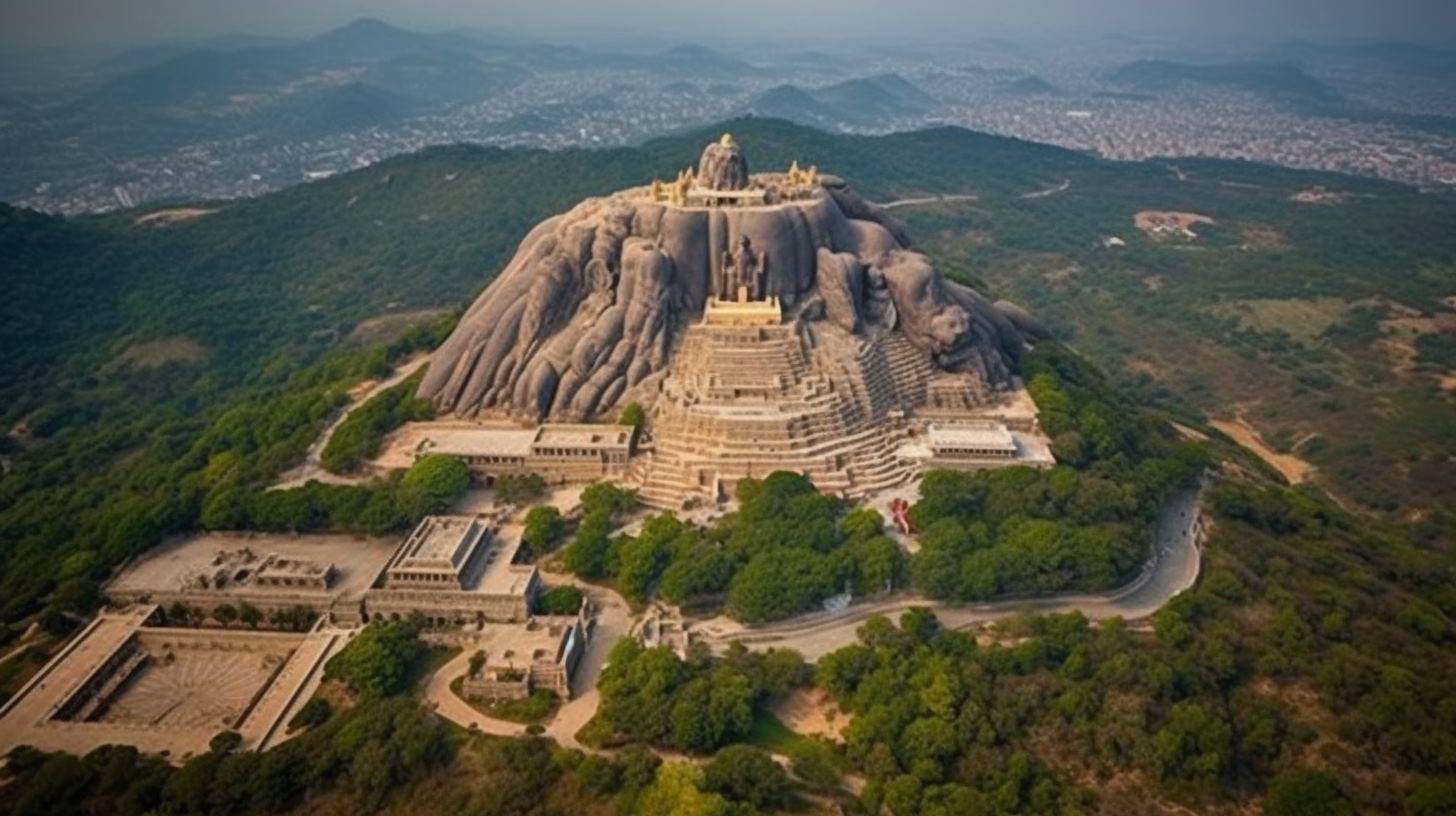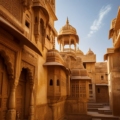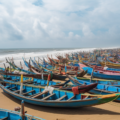Nestled amid the serene landscape of Karnataka, India, lies the ancient town of Shravanabelagola, a destination that encapsulates spirituality, history, and architectural marvels. Renowned for its colossal monolithic statue of Lord Gomateshwara, Shravanabelagola stands as a testament to the rich cultural heritage of India and attracts pilgrims, history enthusiasts, and curious travelers from around the world.
History and Mythology
Shravanabelagola boasts a history that dates back over two millennia. The town finds its mention in various ancient scriptures and inscriptions, tracing its origins to the time of the Mauryan Empire. The legend of the town revolves around the devout tale of Bhagawan Bahubali, the son of the first Jain Tirthankara, Adinath.
The historic significance of Shravanabelagola is primarily linked to the colossal statue of Lord Gomateshwara (Bahubali), standing at an impressive height of about 57 feet atop the Vindhyagiri Hill. Carved out of a single block of granite, this statue is a masterpiece of ancient Jain artistry and craftsmanship.
Spiritual Essence
For Jains, Shravanabelagola holds immense religious importance. The town is a revered pilgrimage site, attracting followers who undertake a challenging journey to pay homage to Lord Gomateshwara. The ritual of Mahamastakabhisheka, an elaborate ceremony involving the anointing of the statue with various sacred substances, takes place once every twelve years, drawing throngs of devotees and tourists alike to witness this grand spectacle.
Architectural Marvels
Apart from the iconic Gomateshwara statue, Shravanabelagola is adorned with a wealth of architectural wonders. The Chandragiri and Vindhyagiri Hills are dotted with numerous ancient Jain temples, intricately carved pillars, and monolithic structures, providing a glimpse into the architectural brilliance of the bygone eras.
Exploring the Town
Visitors to Shravanabelagola can embark on a spiritual and historical journey by climbing the 600 steps leading to the Vindhyagiri Hill. The ascent offers not just a physical challenge but a chance to soak in breathtaking panoramic views and encounter the rich heritage preserved in the form of inscriptions and ruins.
The town itself exudes an old-world charm, with narrow lanes, traditional houses, and a serene ambiance that transports visitors to a different era.
Preserving Heritage
Efforts have been made to preserve the sanctity and historical significance of Shravanabelagola. Conservation initiatives ensure the maintenance of the ancient structures and the natural beauty of the surroundings, allowing future generations to experience the town’s timeless allure.
Conclusion
Shravanabelagola stands as a testament to the confluence of spirituality, history, and architectural brilliance. It remains not just a tourist destination but a place of reverence, inviting travelers to delve into its ancient roots and emerge enriched with a deeper understanding of India’s cultural tapestry. A visit to Shravanabelagola is an immersive journey through time, offering an unparalleled experience that lingers in the hearts of those who tread upon its hallowed grounds.
Whether you seek spiritual solace, historical insight, or simply wish to marvel at ancient craftsmanship, Shravanabelagola beckons with open arms, ready to bestow its timeless treasures upon every visitor.
Frequently Asked Questions
1. What is the significance of Shravanabelagola?
Shravanabelagola boasts profound historical and religious significance, celebrated for the colossal monolithic statue of Lord Gomateshwara and revered as a major pilgrimage site for Jains. With a history spanning over two millennia, the town stands as a testament to its rich heritage.
2. When is the best time to visit Shravanabelagola?
The ideal time to visit Shravanabelagola is during the Mahamastakabhisheka ceremony, which occurs once every twelve years. This grand event attracts a massive influx of devotees and tourists. However, visitors can explore the town year-round, enjoying pleasant weather especially during the winter months from October to March
3. How can one reach Shravanabelagola?
This destination boasts excellent road and rail connectivity. The nearest airport, about 150 kilometers away in Bangalore, offers access. Travelers can reach here via train or road from Bangalore or opt for a direct road journey.
4. What are the main attractions in Shravanabelagola?
The primary attraction is the colossal monolithic statue of Lord Gomateshwara atop Vindhyagiri Hill. Other notable attractions include Chandragiri Hill, various Jain temples, and ancient architectural marvels scattered across the town.
5. Are there accommodation options available in Shravanabelagola?
In Shravanabelagola, there are different lodging choices to fit different budgets. Visitors can find places to stay, like guesthouses and hotels, in the town and its surroundings. It’s a good idea to make reservations ahead of time, especially when it’s the busiest time for tourists.
6. Is there any specific dress code to follow while visiting Shravanabelagola?
While there’s no strict dress code, it’s best to dress modestly and respectfully, especially when visiting religious sites. It’s advisable to wear comfortable footwear for exploring the hills and temples, as there might be some climbing involved.
7. Can non-Jains visit Shravanabelagola?
Absolutely! Shravanabelagola welcomes visitors from all walks of life and beliefs. The town’s historical and architectural marvels, along with its serene ambiance, attract tourists of diverse backgrounds who come to appreciate its cultural heritage.
8. Are photography and videography allowed in Shravanabelagola?
Yes, photography and videography are generally allowed in most areas of Shravanabelagola. However, there might be specific restrictions in certain temples or during religious ceremonies, so it’s advisable to check for any guidelines or permissions before capturing images or videos.
9. What else can one explore around Shravanabelagola?
Apart from Shravanabelagola, visitors can explore nearby attractions such as Belur and Halebidu, famous for their Hoysala architecture and intricate temple carvings. The region also offers opportunities for nature enthusiasts to explore its scenic beauty.
10. Is Shravanabelagola wheelchair accessible?
Although the town’s hilly terrain and ancient structures can present challenges for wheelchair users, certain areas have been made more accessible. Visitors with mobility concerns should inquire about available accessibility options in advance.


